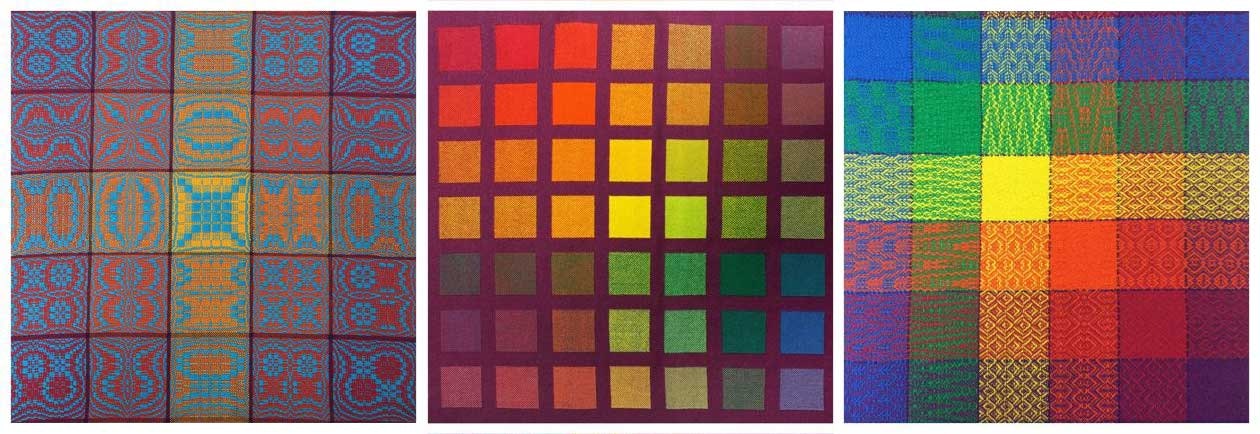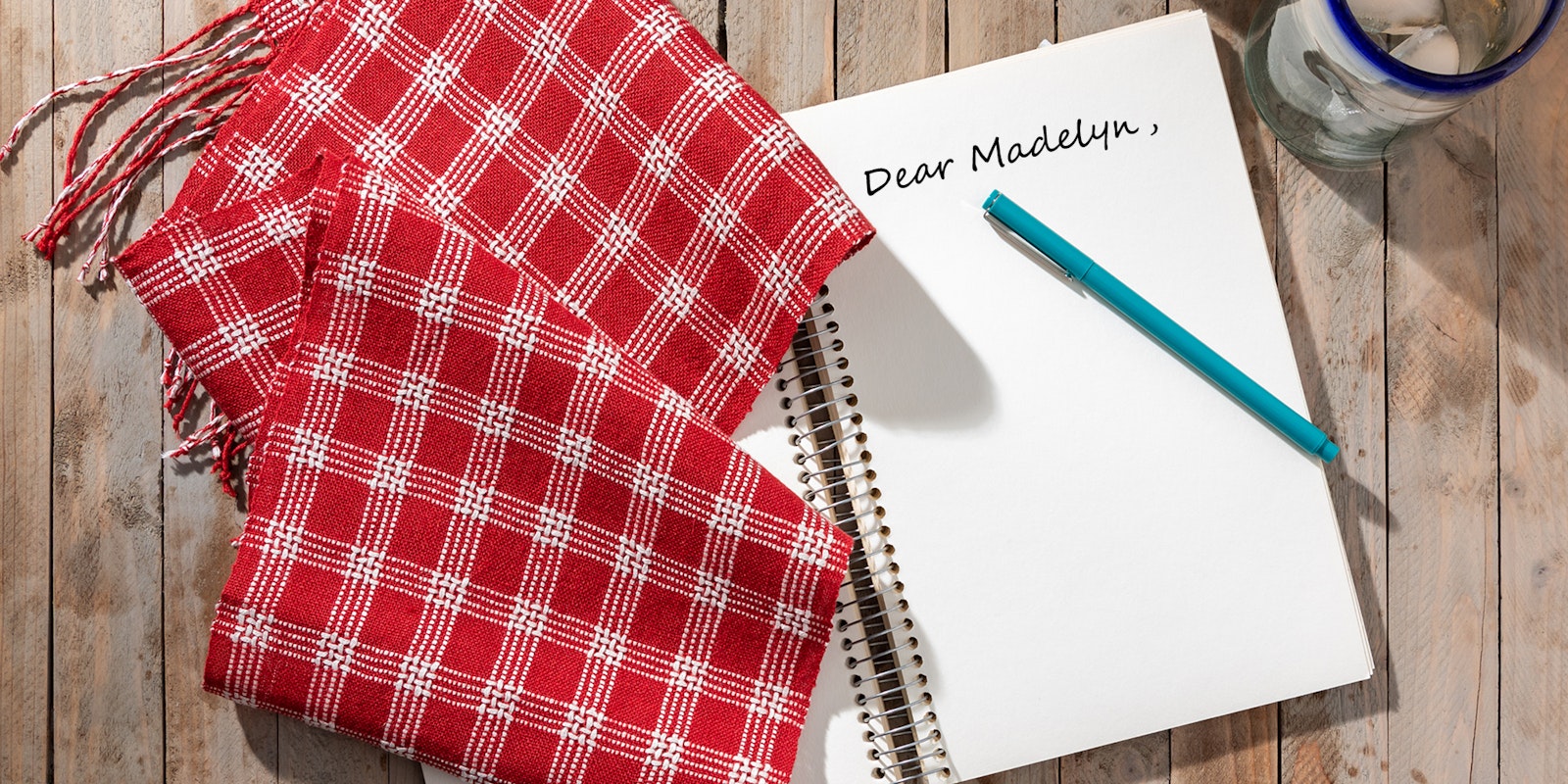I have been looking at projects in Handwoven, and I see several that are called “gamps.” Some of these seem to be overshot and some are twill. What is the actual definition of a gamp? Thanks, –Sandra
Hi Sandra!
The word “gamp” comes from a slang term that the English use for “umbrella.” This usage originated with the character Sarah Gamp, in Charles Dickens’ The Life and Adventures of Martin Chuzzlewit. When I first heard this, I assumed that Sarah’s umbrella had colored sections, making it related to our use of the word gamp, but instead, Sarah Gamp’s umbrella was just big and unwieldy (which I can’t see having much relationship!). The connection must just have to do with the fact that an umbrella has sections, and so do our gamps.
In a woven gamp, a section of the warp is threaded using a particular threading draft in a particular weave structure (either plain weave, twill, overshot, or other) and/or in a particular color. This section is followed by another section of equal size using a different draft (pattern) in the same weave structure and/or a different color (plain weave gamps can only show sections of different colors since the structure throughout is plain weave). Then a third section is threaded using a different draft (pattern) and/or color. This process is continued for the number of sections desired. The treadling is then done with the same number of sections as in the warp: first the treadling and/or color that would be used for the first section in the threading, then those used for the second section, etc.
Gamps allow you to see the different color blends and patterns that are created when one color and/or threading order in the warp is woven using a different color and/or treadling order in the weft. This can be very instructive and inspire new pattern and color combinations for future work. But gamps also tend to make beautiful and interesting pieces in themselves. They are wonderful as wall hangings and can also make decorative and useful objects (towels, table linens, blankets, scarves).

Left: Overshot gamp; Middle: Doubleweave gamp; Right: Twill gamp
Above all, they are fun to weave: they hold your interest throughout. Once you start one, you’ll get additional color and treadling ideas that would never have occurred to you otherwise. After you have finished weaving the planned sections, you can try out additional treadling orders and weft colors.
—Madelyn
If you have a weaving question we would love to hear from you! Please email Madelyn!
Published 11/29/2017 Update 10/31/2022

